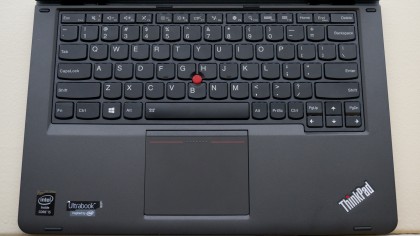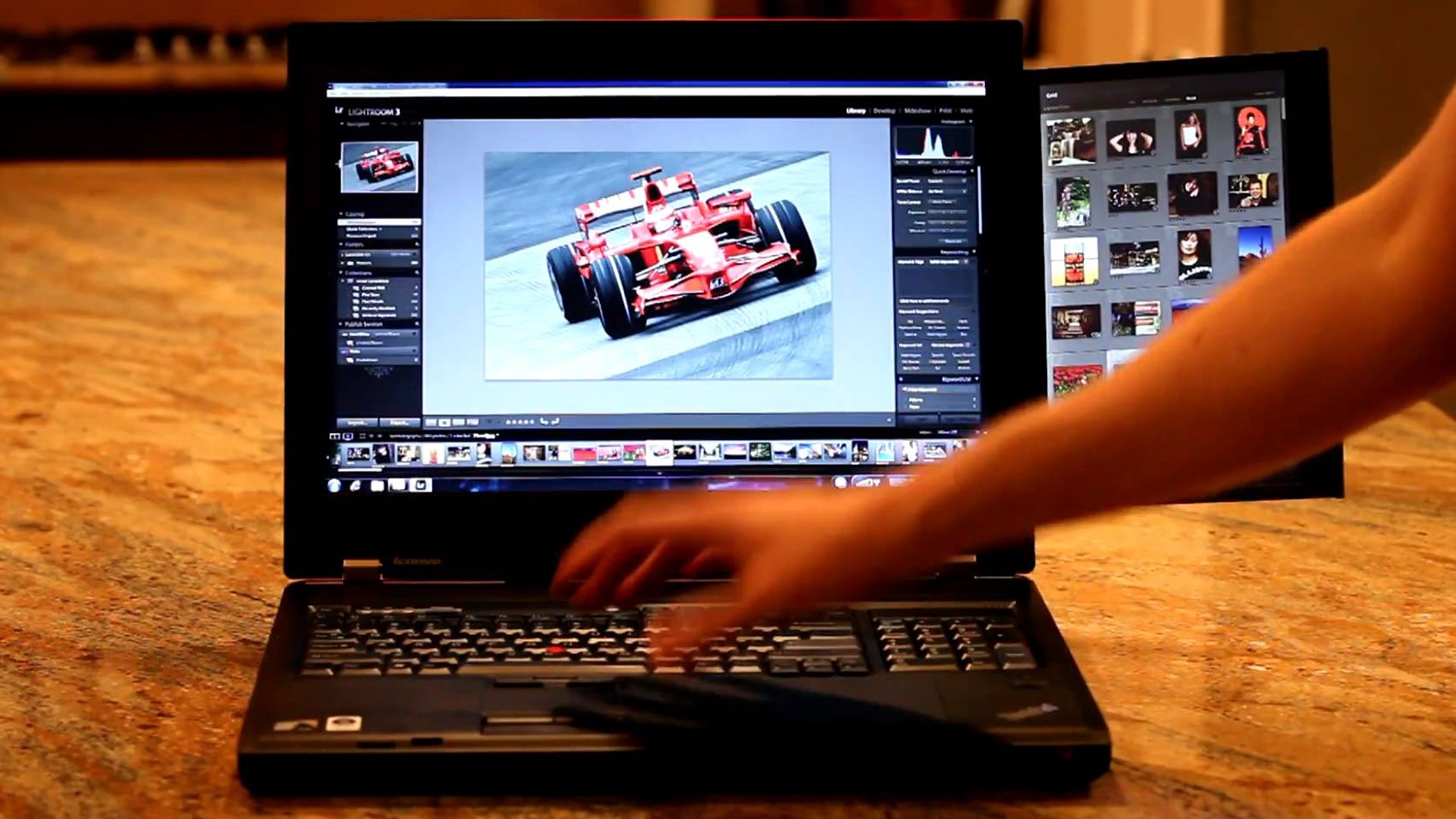Why the ThinkPad TrackPoint is still a thing, according to Lenovo’s chief designer
Many more burning ThinkPad questions answered

Those who didn’t come up in the professional world during IBM’s heyday, yet work on one of Lenovo’s ThinkPad laptops today, might wonder why the TrackPoint is still around. After all, it was IBM’s crowning achievement way back when, but trackpads have come a long way since.
We had the chance to ask Lenovo chief design officer David Hill just that during the Lenovo Transform event in New York City recently, and you might find the answer surprising. (And, no, it’s not just to keep the ThinkPad veterans happy.)
Better yet, Hill shared his thoughts with us on what else of the original ThinkPad design has survived all these years, and how those features continue to differentiate the line of laptops from the competition. Bonus: Hill hints at whether we’ll ever see dual-screen ThinkPads from Lenovo again.
What follows are Hill’s thoughts on these several subjects from our chat, edited slightly for brevity and clarity.
- These are the best 2-in-1 laptops of 2017

On what of the 1992 ThinkPad’s bento box-inspired design has survived 25 years on
David Hill: [Late designer Richard Sapper’s] idea was about this sort of simple surprise. If you look at his work, many of his objects he designed over the course of his career, they’ve had a transformative aspect.
He was fascinated by this concept that an object was simple when you were not using it and complex when you were. He wanted ThinkPad to be this black box that you would look at and say, ‘what’s that?’
The keyboard, if you recall, lifted up [to reveal] all of the components inside – like a bento box. It was brilliant. It was also incredibly efficient, as everything that goes into a laptop is generally square.
Sign up to the TechRadar Pro newsletter to get all the top news, opinion, features and guidance your business needs to succeed!
Even though dimensions and things have changed, primarily in thickness, I think it still has the spirit, the essence of what it is to be a ThinkPad – it’s just the measure is different. It still has this mysterious quality to the outside. It has this jaunty stamp in the corner that says ‘ThinkPad’.
We’re the only company that puts our logo off-center. Why do we do it? First off, who would change it at this point? You’d have to be kind of stupid. Also, at the time, it was a nice contrast to the stark geometry of this box. So, it kind of had this personality, and the three colors were kind of playful – and it suggested the fact there was a color display.
So, even though we’ve squeezed all of this way down, we’ve changed a lot about the keyboard, for instance, it still is a ThinkPad. You can tell.
Even the keys have a unique shape, and that’s for a reason – you can type better on them. It has that curve at the bottom edge that actually makes it less likely to make a typing error. It has a dish because your finger is curved, so it has a self-centering quality.
You know, everybody else makes square keys, I don’t know why – I guess they haven’t looked at the human finger yet. Maybe, someday, they’ll figure it out.

On how ThinkPad’s design efficiency compares to a certain key rival’s
That efficiency still is relevant to us in the world of computer design. Oddly enough, with the borders on screens getting smaller and smaller, it gets more and more useful to us.
If you look at some companies – I won’t name any names, but they make aluminum computers out of California – they have really wide borders. And, in that design, they taper way off the edges. Well, they can do that because they have such a huge border.
But, if they ever want to make a computer with very narrow borders, they will have to be square. I have news for them, because we’ve already done it.

On why the TrackPoint has persisted amid ever-improving trackpads
It’s a little bit like an automatic transmission versus a stick shift. If you know how to drive a stick, you don’t want an automatic transmission. If you don’t drive a stick shift, you’re not going to buy a car that’s got one.
One of the advantages of a TrackPoint is that your hands don’t have to leave the home row to move the cursor. So, you can type and move the cursor without doing this [mimes a hand shifting between a keyboard and a trackpad].
Plus, your finger doesn’t really have to move, because a TrackPoint is strain-gauged, so it measures pressure. It doesn’t move around like a joystick, it’s measuring pressure. Some people get it and some people don’t; some people acquire the taste. It’s hard to explain, but I still think there’s a use for it.

On what IBM’s – and now Lenovo’s – legacy of experimentation means for today’s ThinkPads
I tell people all of the time that when you buy a ThinkPad, you’re actually buying 25 years of ThinkPad. You’re buying this culmination of information that we have. If you’re buying somebody else’s, you’re buying whatever they thought of last week.
They might make some mistakes. We’ve already made the mistakes. We’ve ironed them out; we won’t do them anymore. If you name it, we’ve probably made it or thought about it. If you don’t make those mistakes, maybe you don’t know how far you can go.

On whether we’ll ever see experiments, like the dual-screen ThinkPad W700DS, return from the grave
Personally, I thought that product was kind of cool. It was a computer maybe only a giant could love, because it was really, really big. But, it was also extremely powerful. And, the dual-screen thing I thought was very useful.
It may have life in the future, but at the time it was very experimental and added a lot of thickness and such. But, the displays just keep getting thinner, so it might come back.

On whether we’ll ever see ideas like the Yoga Book make their way to ThinkPad
I think that consumer in general is a good breeding ground for future ideas that find their way into business. There’s a long history of this.
If I go back and think about IBM, and its commercial desktop business, one time they said they would never sell a color monitor – wrong. At one time, they said they would never sell a commercial desktop with a CD drive – wrong. There was another guy who said, “we will never sell a commercial desktop with speakers. People don’t want to listen to anything at work, that’s stupid.”
So, consumer is a great place to flush that stuff out.
- Couple your ThinkPad with one of the best monitors
Joe Osborne is the Senior Technology Editor at Insider Inc. His role is to leads the technology coverage team for the Business Insider Shopping team, facilitating expert reviews, comprehensive buying guides, snap deals news and more. Previously, Joe was TechRadar's US computing editor, leading reviews of everything from gaming PCs to internal components and accessories. In his spare time, Joe is a renowned Dungeons and Dragons dungeon master – and arguably the nicest man in tech.
